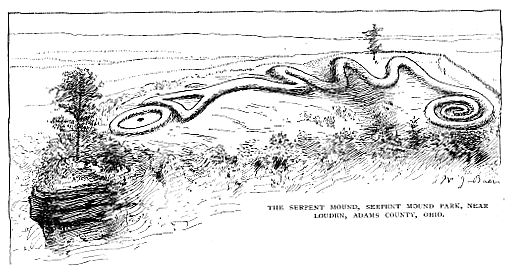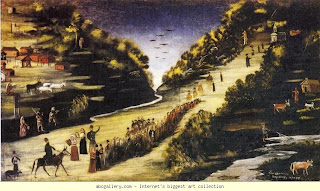Today's interviewee is Peter J. Story, the auspiciously named author of
THINGS GRAK HATES, a darkly funny and occasionally horrifying tale about a man who hates olives and the depths of sociopathy. You can follow Mr. Story on
his Facebook or his
blog, or probably practically any social media platform you prefer.
I stumbled upon Things Grak Hates mostly by chance back during its drafting stages, read a few excerpts, and decided this was a book worth following. And now I have finally had a chance to read the whole thing, and yes, I think it is a fantastic, 5-star book.
Thank you, Mr. Story, for journeying all the way to Elflandia. So, tell us about your novel. What was the hardest part of the story to write?
Limiting the scope of my writing has always been the most difficult thing for me, as I think it is for many writers. I have a tendency to run away with a story and its characters, but that would have broken the rules I defined in my outline. Namely, the pace had to be slow, and the build-up had to be gradual. Another very important, but limiting element was that everything is seen through Grak's eyes, so he only notices the world and those around him when they threaten his desires. Those rules were all crucial to both style and story, but meant taking some very deep breaths when I sat down to write.
What motivates Brak? What motivates the others?
When the story opens, everyone is motivated by habit and naivete more than anything. The supporting characters all begin with a very simple and peaceful set of habits, reflecting their simple, peaceful way of life and establishing a clear comparison to the tribe we see at the end of the novel.
Brak cares about others, yet is a bit of a pushover, partially because of self-image issues. Jafra has always had quite a bit of strength as a matter of necessity--because Grak has grown up rather spoiled, her proximity to him has made her more responsible than might normally occur. Doran is accepting (perhaps to a fault) and a dreamer. Even Grak is motivated by habit, though his habit is self-absorption.
As the tale develops, each character's motivations develop in direct relation to Grak's actions, thus showing a bit more of their true tendencies. Their decisions aren't dictated by unalterable personality traits so much as by sheer force of habit. Thus, they follow their tendencies along the path of least resistance to form the characters we see by the end of the book. Except, of course, for the handful of brave souls willing to go against the grain.
Why hunter-gatherers? And why tyrants?
The nomad choice was basic enough. It seems to be one of the most uncluttered and rhythmic ways of life, which is exactly what's needed to show a drastic shift in the dynamic of a community. And it gave me room to slow the story's pace down enough to give proper focus to Grak's descent.
The tyrant aspect of "Things Grak Hates" just followed naturally from Grak's character. Left to our own devices, I think it’s easy for anyone to become a tyrant of sorts. Most of us have witnessed the likes of a new middle manager in the organization. A person who gains the slightest bit of power, but thinks they've arrived at some promised land. The difference is that their power has natural limits. With "Things Grak Hates," I'm asserting that this hint of megalomania is the same drive behind the tyrants and dictators of history. They crave that control, and they'll do anything to achieve it.
Some of us are less inclined to this trait than others, but ultimately, we are all selfish beings. The natural progression of an undeterred selfish soul ultimately ends with some sort of tyranny. Some are merely tyrants over their immediate circle of friends and family. Others rule tyrannically over their peers and employees. Dictatorships aren't so different--they're just ruled by a tyrant on a much larger scale.
So, without giving away the ending, how much do you agree with it? (You readers will just have to read the book to figure out what we mean.)
That's difficult to answer without giving anything away. Obviously, I don't agree with Grak's behavior. That's the main point of this book. But I do agree with the concept of redemption. Truly. But does Grak deserve redemption? Does any tyrant? Does anyone? Where do we draw the line? More importantly, would redemption be so sweet if it were deserved? Would it fill us with such hope?
In the end, I'm not Grak's judge, so I've left that question open. But like the rest of this book, I think that answer will be different for each person. It all depends on your particular set of experiences, your current focus on life, and the goals you've laid out for yourself. Which side of Grak are you looking at? I've been encouraged by the myriad of reviews that have applauded so many different angles of the story. That's what I was aiming for: to tell a tale with many facets and new meaning from each reading.
Tell us a little about yourself. What are you reading these days?
Most recently, I've been working through an alpha version of book two of "The Last Bucelarii" by Andy Peloquin. It's a dark fantasy series from an incredible new author. The first book is coming out in the next few months. It's kind of fun to read alpha copies, but also somewhat sad. I get to read it first, but since I almost never read a book twice, I don't get to read the final version. But Andy has an intimate relationship with his words, so his alpha versions are actually better than many other completed books that I've read.
Where did you grow up?
I grew up in San Antonio, Texas, and have lived here for much of my life. I find it a charming place. People here are generally quite friendly, and the pace is rather slow for such a large city. Plus, there's a lot of history here, which is precious to me.
What's your favorite kind of coffee?
I use a pour-over coffee brewer at home. People complain that pour-over coffee takes a lot longer to brew, but the flavor is surprisingly better than coffee from a machine. I take it with a little cream, no sugar, a pinch of cinnamon, and a few drops of vanilla. Beyond that, I really have no preference.
What are you working on, now? Do you have a sequel planned, or something new?
It's something new. Very different from Grak in many respects. I'm working on the outline in the spare moments I have while promoting "Things Grak Hates." I'm very particular about my stories, and if something doesn't flesh out into a full story, I won't push it. I'll even scrap a story or put it back on the shelf for later if I don't like it. Because of that, I'm trying to finish the outline before I give away any details.
It's my observation that books seem to reflect their writers. What aspect of you is reflected in your book?
A great deal. More than I even intended. Much of my younger life, I was a bit of a Brak. In fact, other than the fact that he's bald, I think he and young me have a great deal in common. Doran's ability to live on a dream and get completely absorbed by it was also me. Jafra was based mostly on the strong women I've known in my life, but that same willingness to speak the truth through fear was something I drew from my own experiences.
And then there's Grak. I have some OCD tendencies, so I injected that into his character. Also my eyesight is weak, so when I considered putting that in, it clicked with Grak's limited view of the world around him, and I just had to do it. And I've been the young middle-manager I spoke of earlier, so I know firsthand that the desire for control can be addictive. But most of all, I drew on my own fears and pain for Grak. Of course, I had to follow them into new territory, but I'd like to think that if I had clung as tightly to myself as Grak did and rejected the people around me who cared, I could have gone down a darker path. It's sobering.
Would you like to leave us with a quote from your book?
I have such a hard time making decisions like this, but someone recently posted a quote on their Tumblr feed and it's definitely one of my favorites.
“Sometimes life just … happens. And sometimes it hurts, and we can’t stop it. We can’t control it, no matter how hard we try. And that hurts even more.”
Thanks for everything!

























.jpg)























